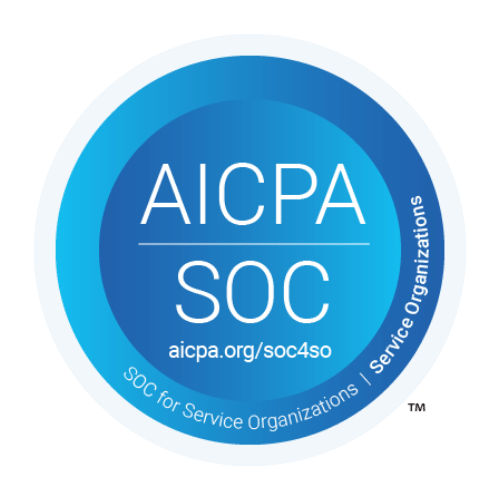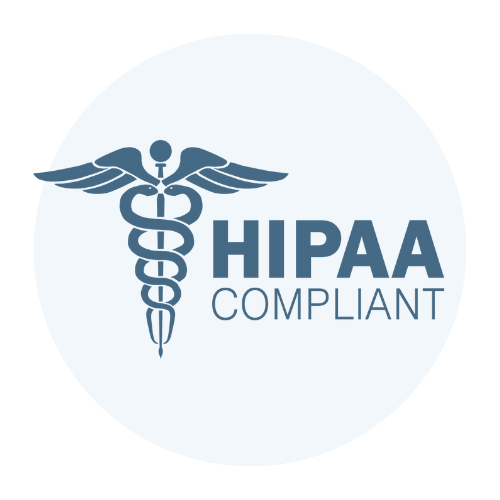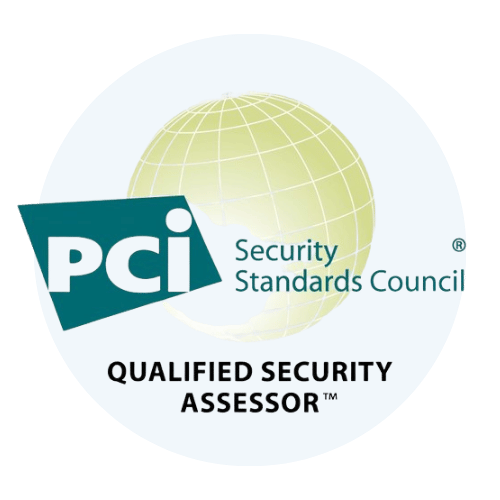External vs Internal Penetration Testing: What Your Organization Needs
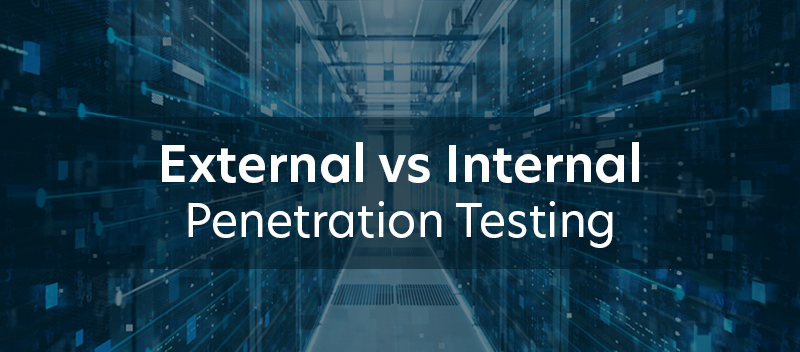
Penetration testing is a critical component of modern cybersecurity. It simulates real-world attacks to identify vulnerabilities before they can be exploited. Organizations rely on two primary types of testing to secure their systems comprehensively. Key benefits of penetration testing include: External Penetration Testing evaluates your external networks, identifying weaknesses hackers could exploit from outside the organization. Internal Penetration Testing examines internal systems, mimicking insider threats or breaches that bypass external defenses. Combined, these strategies offer a comprehensive picture of your company’s security posture and guarantee that vulnerabilities are fixed at every stage. Relying solely on one kind of test compromises your defenses, which might put you at significant risk. By utilizing both testing methodologies, organizations may improve their overall network security and proactively combat cyber-attacks. This article will explain the key differences between internal and external penetration testing, each type’s unique advantages, and how to choose the most appropriate testing approach for your needs. External Penetration Testing External penetration testing employs various techniques to uncover weak spots in your external assets, such as websites, servers, or email systems. These are some of the most commonly used methods: Vulnerability Scanning: These tools scan external systems and applications for known vulnerabilities, such as outdated software, unpatched systems, or configuration errors. Web Application Testing: This technique identifies security flaws in web applications, such as SQL injection or cross-site scripting (XSS), which attackers could exploit to gain control or steal sensitive data. Social Engineering Attacks: Techniques like phishing (fraudulent emails) or vishing (voice-based scams) test the organization’s human defenses, assessing whether employees can recognize and respond to attempts at manipulation. Network Mapping and Reconnaissance: Attackers often begin by mapping out an organization’s external network, studying its structure and weak spots. Testing these reconnaissance methods helps identify unsecured entry points or areas lacking sufficient protection. Identifying Entry Points and Attack Vectors The ultimate goal of external penetration testing is to pinpoint how a hacker might get their foot in the door. By revealing entry points, outdated systems, or poor security protocols, this testing provides valuable insight into potential risks. Addressing the gaps exposed during these tests strengthens the organization’s overall security posture and reduces the likelihood of successful external breaches. With these insights, businesses can proactively defend their perimeter and protect sensitive data from external threats. For more info on our Penetration Testing services, Click Here Internal Penetration Testing Internal penetration testing focuses on uncovering security gaps that external tests might not detect, offering critical insights into your organization’s internal controls and their resilience against potential insider threats or sophisticated attacks. At TrustNet, our internal penetration testing process is designed to thoroughly assess your internal network defenses. The steps involved include: Establishing a Secure Connection: We begin by connecting to the client’s VPN as per the access details provided. This ensures we can test the network from an internal perspective. Identifying Hosts: Our experts identify all available hosts within the internal network to map out systems and potential attack surfaces. Vulnerability Scanning: Each host is scanned for security vulnerabilities, ensuring no potential weak points are overlooked. Exploitation Testing: When vulnerabilities are detected, we attempt exploitation to evaluate the practical risks and consequences, such as unauthorized access or data exposure. This methodical approach allows us to simulate real-world attack scenarios and deliver actionable insights to enhance your organization’s internal security posture. Strengthening Internal Protections Internal penetration testing identifies weaknesses in access controls, encryption, and logging mechanisms, ensuring they can withstand internal attacks. It provides a deeper understanding of how well your organization can detect and respond to breaches that bypass the external perimeter. Choosing Between External and Internal Penetration Testing Deciding between external and internal penetration testing depends on your organization’s unique security needs and circumstances. Each type of testing serves a distinct purpose and understanding when to use them ensures you get the most value from your cybersecurity efforts. Factors to Consider When evaluating which approach to prioritize, keep the following in mind: — Organization’s Specific Security Needs and Risk Profile Do you need to assess risks from external attackers, internal threats, or both? Understanding your primary vulnerabilities helps determine where to focus first. — Industry Regulations and Compliance Requirements Many industries require regular security testing to meet compliance standards like PCI DSS, HIPAA, or GDPR. Compliance mandates may specify the type of testing needed. — Budget Constraints Financial resources can influence whether you focus on one type of testing or conduct both. Allocating your budget effectively is key to maximizing security coverage. — Current Security Posture and Existing Controls Consider the strength of your current defenses. If external perimeters are robust, internal testing may help identify gaps within your network. Conversely, weak external defenses may require immediate attention. When to Conduct Each Type of Testing To maintain an effective security strategy, it’s crucial to know when to deploy external and internal penetration tests. Here are some common scenarios to guide your timing: Regular Intervals: Schedule tests annually or biannually to ensure your defenses remain effective against evolving threats. After Major System Changes: Conduct testing after deploying new software, updating systems, or implementing significant infrastructure changes. Following a Security Incident: If your organization experiences a breach, testing can help identify how the incident occurred and prevent future attacks. Choosing the right type of penetration testing —or combining both— aligns your approach with your risk landscape. A strategic testing plan ensures your organization remains resilient against all potential threats. Combining External and Internal Testing for Comprehensive Security By combining both approaches, you create a hybrid testing strategy that provides a comprehensive view of your security posture and addresses vulnerabilities from every angle. This unified approach ensures no part of your network or operations goes unprotected. Creating a Hybrid Testing Approach A well-designed hybrid approach integrates the strengths of both external and internal testing. External tests focus on the threats outside your network, while internal tests dig deeper into risks posed by insiders or breaches that manage to bypass perimeter defenses. Together, they create a
The Top 5 Cybersecurity Threats to Watch Out for in 2025 (Emerging Threats & Solutions)
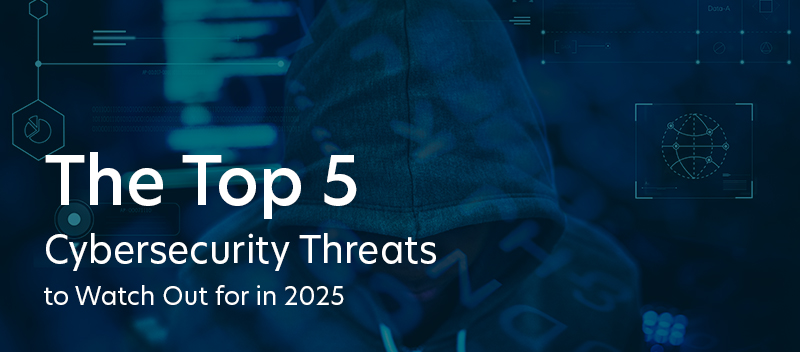
As technology advances, so do cybercriminals’ tactics, resulting in increasingly complex vulnerabilities. The cybersecurity threats in 2025 are not hypothetical; they represent clear and present dangers to businesses and individuals alike. The risks are growing and adapting faster than many organizations can respond. Staying ahead of future cyber risks is no longer optional. It’s a necessity. Identifying emerging digital dangers before they escalate Understanding the cybersecurity landscape evolution to strengthen resilience Leveraging threat prediction tools to outpace malicious actors TrustNet is at the forefront of safeguarding against these challenges. By utilizing advanced predictive threat intelligence, TrustNet empowers organizations to anticipate and counter cyber risks proactively. Combining innovative technology and expert insights, this approach ensures you stay protected in a rapidly changing environment. Effective cybersecurity doesn’t just happen; it demands preparation, adaptability, and strategic action. This guide will uncover the top threats to watch for in 2025 and offer practical solutions to keep your organization secure. Threat #1: AI-Powered Cyber Attacks The rise of artificial intelligence (AI) has brought incredible advancements, but it’s also given cybercriminals new tools to exploit. AI-driven cyber-attacks are emerging as a top threat, combining intelligence and adaptability to outmaneuver traditional defenses. Organizations must recognize the growing complexity of these threats to remain protected. How AI is Changing the Game Attackers are using artificial intelligence in unprecedented ways, including: Intelligent malware that learns and adjusts its tactics to evade detection. Adversarial AI that manipulates machine learning models, exploiting weaknesses in security systems. Automated hacking to scale operations and target multiple systems simultaneously with extreme precision. These new technologies allow cybercriminals to create attacks that mimic legitimate user behavior or adapt in real-time, making them harder to detect and counter. Why These Threats Are Challenging to Stop Evasiveness: AI-powered threats blend into normal activity, dodging detection systems. Adaptability: They evolve rapidly, bypassing static defenses. Impact: The scale and speed of these attacks can overwhelm even the most advanced cybersecurity teams. The Potential Impact The risks aren’t limited to data breaches or financial losses. These threats could: Compromise critical infrastructure, such as power grids or healthcare systems. Disrupt global supply chains, creating widespread ripple effects. Jeopardize sensitive data, leading to operational chaos and reputational damage. TrustNet’s Proactive Approach Combatting AI-driven cyber-attacks requires staying ahead with innovative solutions. TrustNet employs advanced threat detection and response systems to neutralize these risks before they escalate. Our strategies include: Leveraging AI to identify unusual patterns and respond in real-time. Using predictive intelligence to anticipate threats before they strike. Providing expert-backed frameworks that adapt to evolving attack techniques. With our proactive solutions, businesses can safeguard their operations and reduce vulnerabilities. The key is not to react — but to anticipate. For more info on our cybersecurity and compliance services, Schedule a Call with Our Experts Today Threat #2: Quantum Computing Vulnerabilities Quantum computing threats represent a potential game-changer by undermining the encryption methods we rely on today. If quantum supremacy becomes a reality, current cryptographic standards may no longer hold up — leaving sensitive data vulnerable to exploitation. How Quantum Computers Threaten Security Unlike traditional computers, quantum systems harness quantum bits (qubits) to perform calculations at unimaginable speeds. This could allow them to break widely used encryption protocols like RSA and ECC, which depend on the difficulty of solving complex mathematical problems. Once these defenses fall, attackers could decrypt secure communications or access critical information with ease. Key risks include: Cryptographic vulnerability in enterprises using outdated encryption standards. Quantum supremacy risks, where hackers could exploit superior quantum machines to bypass defenses entirely. When Will Quantum Threats Become Real? Experts estimate that practical quantum computers capable of breaking encryption may emerge within the next 10 to 20 years. However, the transition to post-quantum cryptography must begin now. Waiting until these threats fully materialize could lead to significant data breaches, particularly for industries handling long-term sensitive data. Industries Most at Risk Some sectors face higher exposure to quantum computing threats due to the nature of their data: Finance: Compromised encryption in banking systems could lead to fraud and financial instability. Government: Security clearance data, intelligence archives, and critical infrastructure could be jeopardized. Healthcare: Patient records and biomedical research data could face mass breaches. TrustNet’s Quantum-Safe Solutions To combat these future threats, TrustNet offers robust solutions: Implementing encryption methods that secure sensitive data against quantum attacks. Providing comprehensive transition strategies to help businesses migrate to post-quantum cryptography without disrupting operations. Utilizing proactive risk assessments to identify and mitigate cryptographic vulnerabilities before quantum tech evolves further. The challenges posed by quantum supremacy risks demand immediate action. By adopting quantum-safe security now, you can protect your organization from threats that aren’t just theoretical but imminent. Threat #3: Advanced IoT Exploits With billions of devices now interconnected, IoT security threats in 2025 are anticipated to grow in scale and sophistication. The Expanding Threat Landscape IoT devices, from smart thermostats to industrial control systems, are embedded in crucial parts of our lives and operations. Unfortunately, their convenience often comes at the expense of robust security. Smart device vulnerabilities often arise from poorly implemented security measures or outdated software. IoT botnet evolution has enabled attackers to hijack massive networks of connected devices for devastating distributed denial-of-service (DDoS) attacks. Connected device attacks exploit endpoints that are either unsecured or under-protected, threatening personal and corporate environments alike. The integration of IoT with edge computing adds another layer of complexity. While edge computing boosts efficiency and speed, it also introduces edge computing risks by increasing potential entry points for hackers. Securing a Sea of Devices Protecting IoT ecosystems is uniquely challenging because of their diversity and the sheer number of endpoints. Many IoT devices lack robust security features due to cost or design priorities. Managing updates and deploying security patches over a massive network of devices is time-intensive and difficult. Malicious actors are continually developing more advanced malware targeting IoT infrastructures, leaving outdated systems at heightened risk. Without a comprehensive strategy, organizations may find themselves unable to manage these vulnerabilities, exposing critical systems to
Third-Party Cyber Risk Management: Assessment and Continuous Monitoring

Cyber risks linked to third-party vendors are a growing threat to organizations everywhere. From supply chain partners to service providers, these external relationships, while essential, can expose businesses to significant vulnerabilities. High-profile data breaches tied to vendors have shown just how costly these risks can be; think financial losses, tarnished reputations, and regulatory penalties. Managing third-party cyber risks is no longer optional. It’s a critical business priority. Identifying risks across your network of vendors and partners Assessing security practices to ensure compliance and resilience Continuously monitoring vendor security to stay ahead of potential threats This isn’t a one-and-done process; continual vigilance is key. From performing cyber risk assessments to setting continuous monitoring procedures in place, this guide will show you how to take practical actions to safeguard the business you run. Third-Party Cyber Risk Assessment Effective third-party cyber risk management begins with a thorough assessment process. This involves understanding vendor vulnerabilities, evaluating security controls, and ensuring compliance with critical regulations. Below are the key steps to building a robust risk assessment framework that protects your organization. — Vendor Due Diligence Before onboarding any vendor, conducting detailed due diligence is essential to identify potential risks. Key actions include: Information Gathering Review contracts, policies, and service agreements. Utilize questionnaires to assess vendor security practices. Perform security audits to uncover potential weaknesses. Risk Scoring and Prioritization Rank vendors based on their criticality to your operations and the sensitivity of the data they handle. Focus on high-risk vendors first, ensuring your resources are spent where protection is most needed. Assess Vendor Security Controls Verify access controls, data encryption protocols, and incident response plans. Ensure vendors align with your organization’s cybersecurity requirements. Evaluate Compliance with Regulations Confirm adherence to industry-specific laws like GDPR, HIPAA, or CCPA. Non-compliance among vendors can expose your business to legal repercussions. — Risk Assessment Methodologies Choosing the right approach to risk assessment can help streamline the process and provide actionable insights. Qualitative Risk Assessments Use tools like risk registers or scoring matrices to identify potential issues. Focus on scenarios and qualitative feedback to gain a holistic understanding. Quantitative Risk Assessments Employ techniques like fault tree analysis or risk factor evaluations to measure impacts in tangible terms, such as financial loss or operational disruption. — Third-Party Risk Management Platforms and Tools Tools like TrustNet’s iTrust can simplify third-party risk management by delivering actionable intelligence and automating critical tasks. Here’s how iTrust can help: 1. Vendor Risk Management iTrust conducts comprehensive assessments to identify weaknesses within your vendor ecosystem, ensuring long-term resilience. 2. 360° Assessments Gain full visibility into internal and external vulnerabilities, allowing for a well-rounded approach to vendor security. 3. Compliance Monitoring Stay aligned with evolving regulations while minimizing risks and maintaining your organization’s integrity. Even with strong internal strategies, partnering with experts like TrustNet offers an invaluable layer of protection. For more info on our Vendor Risk Management services, Click Here Continuous Monitoring of Third-Party Risks Here’s how you can make continuous monitoring a core part of your third-party risk management program: — Real-Time Monitoring Staying informed about vendor-related risks in real-time can help you respond proactively. Key actions include: Tracking Security News and Threat Intelligence Monitor cyber threat reports and news that could impact your vendors. Identify emerging risks, such as data breaches or malware threats, tied to your third-party partners. Assessing Vendor Security Postures Keep an eye on any changes in vendor security, such as updates to policies, practices, or personnel. Using Security Rating Services Leverage platforms offering security ratings like iTrust to evaluate vendors’ risk levels consistently and efficiently. — Automated Monitoring Automation streamlines the monitoring process, saving time while improving accuracy. Consider the following steps: 1. Integrating with Vendor Security APIs Use APIs to access real-time data on vendor security systems. These integrations offer instant updates on vulnerabilities and compliance status. 2. Conducting Vulnerability Scans and Penetration Tests Automate regular scans to identify weaknesses in your vendors’ systems. Simulate cyberattacks to evaluate how effectively vendors can respond to real-world threats. 3. Regular Reviews and Assessments Even with real-time and automated monitoring in place, periodic evaluations remain critical. Build them into your processes to maintain comprehensive oversight. 4. Reassess High-Risk Vendors Periodically Focus on reviewing vendors handling sensitive data or critical operations. Prioritize these reviews based on their associated risk levels. 5. Collaborate with Vendors Maintain regular communication to share feedback, address concerns, and highlight areas for security improvements. Work together to develop security roadmaps or address recurring issues effectively. Overall, these strategies not only reduce potential vulnerabilities but also foster stronger, more transparent relationships with your vendors. Mitigating Third-Party Cyber Risks Even the best-prepared organizations face risks when working with third-party vendors. Here’s how you can address key areas of risk: Contractual Agreements Strong contracts set the foundation for secure vendor relationships. They define expectations and hold vendors accountable for maintaining robust cybersecurity practices. Key steps include: 1. Adding Security Clauses Specify minimum security standards and requirements, such as encryption, access controls, and regular audits. Include provisions for immediate notification in case of a security breach. 2. Defining Service Level Agreements (SLAs) Create measurable security performance benchmarks. Ensure SLAs outline consequences for non-compliance, such as remediation efforts or termination clauses. 3. Incident Response Planning No organization is immune to incidents, which is why having a robust response plan in place is essential. With vendors in the picture, this process becomes even more crucial. 4. Develop a Third-Party Incident Plan Map out clear steps for responding to breaches involving vendors. Include roles and responsibilities for both your team and the vendor. Define timeframes for reporting incidents and initiating recovery actions. 5. Establish Communication Channels Set up direct ways to reach vendors during a crisis. Use escalation procedures to speed up decision-making and minimize response times. 6. Security Awareness Training Third-party cyber risks don’t just live with vendors. Employees within your organization also need awareness and training to mitigate these threats. 7. Educate Employees on Vendor Risks Give helpful suggestions on how to mitigate the
Cloud Security Compliance: FedRAMP Requirements and Certification Guide
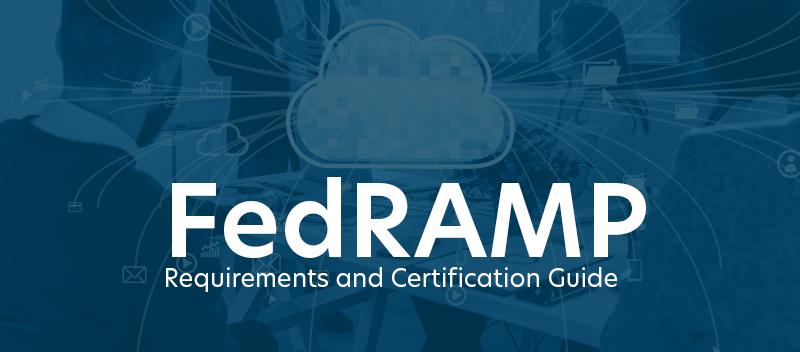
FedRAMP compliance is essential for organizations that provide cloud services to federal agencies. It ensures data security, standardizes best practices, and builds trust with government clients. What is FedRAMP? The Federal Risk and Authorization Management Program sets nationwide standards for cloud security, ensuring consistent evaluation and monitoring across government-used services. Why is FedRAMP Compliance Important? Compliance reinforces data protection, reduces cybersecurity risks, and opens the door to valuable federal contracting opportunities. Overview of the FedRAMP Authorization Process This multi-step certification process includes readiness assessments, the implementation of security controls, and rigorous audits to verify compliance with federal standards. FedRAMP Security Levels Low, Moderate, and High security levels are tailored to protect data based on sensitivity, ensuring robust, appropriate safeguards. Read on to explore detailed insights, actionable tips, and best practices for successfully achieving and maintaining FedRAMP compliance. Core FedRAMP Security Controls FedRAMP defines a stringent set of security controls that cloud service providers (CSPs) must implement to protect government data and systems. These controls are a foundation for maintaining compliance and ensuring cloud environments remain secure, reliable, and resilient. Below are the key areas of focus: — Access Control Authentication and Authorization: Establish robust processes for verifying user identities and granting access only to authorized personnel. Principle of Least Privilege: Limit user permissions to only what is necessary for job responsibilities. Account Management: Ensure accounts are monitored, reviewed, and deactivated when no longer needed. — Identification and Authentication Multi-Factor Authentication (MFA): Strengthen security by requiring a combination of credentials, such as passwords, tokens, or biometrics. Identity Verification: Use rigorous identity-proofing mechanisms to confirm user credentials. — System and Communication Protection Encryption: Safeguard data in transit and at rest using high-level encryption standards. Firewalls: Deploy strong firewall rules to isolate and protect system boundaries. Intrusion Detection and Prevention Systems: Continuously monitor and block unauthorized access attempts. — Information Protection Data Classification and Labeling: Categorize data based on sensitivity and ensure appropriate labeling for secure handling. Access Controls: Enforce strict controls that prevent unauthorized users from accessing sensitive information. — System and Information Integrity Integrity Controls: Implement mechanisms to detect and respond to unauthorized system changes or data corruption. Change Management: Establish a thorough process to track, test, and approve changes to system configurations. — Availability Disaster Recovery: Develop and regularly test recovery plans to ensure rapid restoration of services after disruptions. Business Continuity Planning: Prepare systems to withstand and adapt to emergencies with minimal impact. System Monitoring: Continuously monitor operations to identify and resolve potential issues before they escalate. — Maintenance System Updates: Regularly update software and systems to address vulnerabilities. Vulnerability Management: Conduct periodic scans and assessments to identify and remediate security gaps. Penetration Testing: Simulate attacks to uncover weaknesses in your system’s defenses. — Personnel Security Background Checks: Screen employees to ensure trustworthiness and reliability. Training and Awareness: Equip personnel with knowledge of cybersecurity practices and compliance standards. — Physical and Environmental Protection Data Center Security: Secure physical premises with surveillance, security guards, and controlled access. Environmental Protections: Guard against environmental threats like fire, flooding, or power loss to maintain operational stability. By enforcing these controls, CSPs not only achieve compliance but also build a trusting environment for federal agencies. Each measure works collectively to protect data, ensure operational integrity, and mitigate risks. For more info on our FedRAMP Compliance services, Click Here The FedRAMP Authorization Process Securing FedRAMP authorization involves a structured, multi-phase process that CSPs must follow to meet federal security standards. 1. FedRAMP In Process This initial phase focuses on developing the foundational documentation and beginning the assessment process. System Security Plan (SSP) Development: CSPs start by creating a comprehensive SSP, which details their system’s design and implemented security controls. Initial Readiness Assessment: A Third-Party Assessment Organization (3PAO) may perform a preliminary evaluation to identify gaps and recommend improvements before proceeding. 2. FedRAMP Ready Reaching the “FedRAMP Ready” phase demonstrates that a CSP meets baseline federal requirements. Completion of the SSP: The SSP is finalized to ensure it addresses all applicable NIST 800-53 controls. Readiness Assessment: A formal assessment by a 3PAO confirms the provider’s preparedness for the authorization process. This step builds confidence in the CSP’s ability to manage security risks effectively. 3. FedRAMP Authorized Achieving FedRAMP authorization is a significant milestone that enables CSPs to work with federal agencies. Provisional Authorization to Operate (P-ATO): For providers pursuing the Joint Authorization Board (JAB) pathway, a P-ATO is granted after detailed security assessments. This allows systems to be widely used by federal agencies. Authority to Operate (ATO): CSPs following the Agency Process receive an ATO directly from their sponsoring federal agency. This process is tailored to the specific agency’s needs and mission. 4. Continuous Monitoring Maintaining compliance doesn’t end with authorization. Continuous monitoring is critical for ensuring long-term security and operational integrity. Regular Vulnerability Scans: CSPs must conduct ongoing scans to identify and resolve potential security issues quickly. Reporting: Providers submit detailed security reports to demonstrate adherence to FedRAMP standards. Control Updates: Security controls are regularly reviewed and updated to reflect evolving threats and technologies. The authorization process may be rigorous, but it opens doors to valuable government partnerships and long-term growth. Best Practices for FedRAMP Compliance These best practices can simplify the FedRAMP compliance process and help you stay on track. — Building a Strong Security Culture Creating a robust security-first mindset across your organization is essential for compliance. Leadership Commitment: Ensure executives prioritize security and allocate resources to support compliance initiatives. Team Accountability: Foster a culture where every employee understands their role in protecting data and systems. Ongoing Training: Conduct regular training sessions to inform staff about emerging threats and best practices. — Engaging with a 3PAO Partnering with an accredited 3PAO is a critical component of the FedRAMP process. Expert Guidance: Leverage the 3PAO’s expertise to identify and address gaps early. Compliance Confidence: Independent assessments validate that your systems meet FedRAMP’s rigorous requirements. Smooth Audits: Collaborate closely with your 3PAO to ensure readiness and reduce the risk of delays. — Developing a
Purple Team Security Testing: Enhancing Your Cybersecurity Strategy
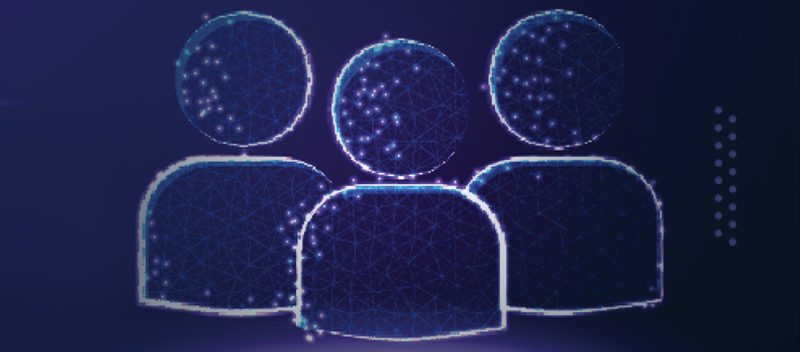
Purple Team Security Testing offers a solution by combining offensive Red Team tactics with defensive Blue Team strategies. This collaborative approach strengthens cybersecurity defenses and bridges gaps in traditional practices. Key benefits of Purple Team testing include: Improved threat detection through joint simulation exercises. Enhanced threat intelligence leveraging shared expertise. Better incident response facilitated by seamless communication. A stronger overall security posture to combat evolving threats. Traditional penetration testing often fails to reflect the complexity of real-world cyberattacks or promote teamwork between security roles. By promoting cooperation, Purple Teaming gets around these restrictions and keeps your business proactive and well-defended. This article will break down the evolution of cybersecurity testing, explore the limitations of traditional methods, and highlight how Purple Team testing can transform your security framework into a resilient, cohesive strategy. Key Components of Purple Team Security Testing Unlocking Purple Team Security Testing’s full potential requires an understanding of its core components. – Red Team Activities The Red Team is your simulated adversary tasked with exposing vulnerabilities by mimicking real-world attackers. Their activities include: Advanced threat emulation, replicating sophisticated tactics used by cybercriminals. Exploiting weaknesses in systems, applications, or networks to uncover risks. Simulating real-world attacker techniques, such as phishing and social engineering, to test organizational resilience. These offensive strategies give organizations valuable insight into their security readiness and areas needing improvement. – Blue Team Activities The Blue Team is the defense, ensuring your organization can detect, respond to, and recover from potential threats. Their focus areas include: Threat hunting and advanced detection to find malicious activities before they escalate. Incident response and remediation, enabling swift action to contain and neutralize threats. Enhancing security controls through reinforced policies and technical measures to prevent breaches. These activities fortify your defenses, creating a secure and proactive environment. – Collaboration and Communication What makes Purple Teaming unique is its emphasis on teamwork. Through open collaboration, Red and Blue Teams work together to maximize security outcomes by: Maintaining continuous communication during tests to stay aligned. Sharing insights and findings to build comprehensive threat intelligence. Jointly analyzing vulnerabilities and mitigation strategies to close gaps effectively. This collaborative model ensures that vulnerabilities are addressed collectively, fostering a stronger, more cohesive security posture. For more info on our Penetration Testing services, Click Here Implementing a Successful Purple Team Program To maximize the benefits of Purple Team Security Testing, a structured approach is essential. Here’s how to implement a successful Purple Team program. Defining Scope and Objectives A well-planned Purple Team exercise starts with clearly defined goals. Without a clear direction, efforts can become unfocused and inefficient. Key steps include: Setting specific objectives to identify the outcomes you aim to achieve, such as improved threat detection or better incident response. Defining the scope by outlining what systems, networks, or applications will be tested. Establishing boundaries to ensure tests do not disrupt critical operations or exceed ethical limits. Articulated plans ensure the exercise remains targeted and actionable. Building a Skilled Purple Team The success of your program highly depends on the expertise and collaboration of your team. Focus on: Recruiting experienced professionals, including Red Team attackers and Blue Team defenders, who understand the nuances of advanced cyber threats. Training team members to ensure they are up to date on the latest tools and techniques used in threat simulation and detection. Fostering a collaborative culture where team members work together, share findings openly, and align on shared goals. A skilled and cooperative team is integral to bridging the offense-defense divide. Establishing Clear Rules of Engagement To maintain integrity and safety during the testing process, clarity is key. This involves: Defining boundaries for acceptable testing activities, avoiding actions that could cause disruptions or unintended harm. Ensuring data privacy and confidentiality to protect sensitive information from exposure during exercises. These rules not only guide the team but also build trust across the organization, ensuring stakeholders feel confident in the program. Continuous Improvement Cyber threats evolve continuously, and so should your strategies. To maintain an effective defense: Regularly review and refine exercises, incorporating lessons learned to close security gaps. Update security controls and policies based on test findings, turning insights into actionable improvements. By committing to continuous improvement, organizations can stay ahead of emerging threats and maintain a robust security posture. Tools and Technologies for Purple Team Testing Below are the tools and technologies that support effective Purple Team operations. — Threat Intelligence Platforms Threat intelligence platforms form the foundation of proactive security. Key features include: Aggregating threat intelligence data from multiple sources to provide a comprehensive understanding of potential risks. Analyzing trends and patterns to anticipate attacker behaviors and prepare defenses accordingly. Using these platforms ensures that both Red and Blue Teams operate with the most relevant and current data. — Security Information and Event Management (SIEM) Systems SIEM systems play a vital role in Purple Teaming by centralizing and monitoring security events. Essential capabilities include: Real-time monitoring of logs and events, providing insights into potential breaches as they develop. Correlating data from various sources to identify complex attack patterns. With SIEM systems, Blue Teams can respond faster to threats, while Red Teams can validate the effectiveness of existing detection mechanisms. — Vulnerability Scanners Vulnerability scanners help identify weaknesses within your environment, allowing teams to address risks before they are exploited. They provide: Automated assessments of networks, systems, and applications, uncovering known vulnerabilities. Prioritized results so teams can focus their efforts on the most critical risks. These tools are invaluable for maintaining a secure baseline and ensuring systems remain resilient over time. — Penetration Testing Tools Penetration testing tools simulate real-world attack techniques, enabling Red Teams to assess an organization’s defenses under pressure. Their key functions include: Replicating attacker behaviors, such as exploiting software flaws or bypassing security controls. Testing defenses in a controlled setting guarantees that vulnerabilities are found without interfering with business operations. Together, these solutions enable a comprehensive approach to identifying, testing, and mitigating cybersecurity risks. Sustaining GDPR Compliance: A Continuous Journey Purple Team Security Testing
GDPR Compliance for US Companies: Requirements and Implementation Guide

While the General Data Protection Regulation (GDPR) is an EU regulation, it applies to any company — regardless of location — that processes or handles the personal data of EU citizens. This makes compliance essential for US businesses offering goods, services, or operating in the European market. At its core, the GDPR prioritizes data privacy and protection through principles such as: Lawfulness, fairness, and transparency in data processing. Limiting data collection to specific, legitimate purposes. Ensuring process-wide accountability, security, and accuracy. Noncompliance may result in major repercussions, such as hefty penalties, harm to one’s reputation, and even a decline in client confidence. This guide helps you safeguard your business, reduce risks, and stay compliant by breaking down the GDPR’s fundamental requirements and attainable implementation procedures. Core GDPR Requirements for US Companies Below is a closer look at the core GDPR requirements that businesses must adhere to: — Data Subject Rights GDPR grants individuals several rights concerning their personal data. US companies must understand and uphold these rights to remain compliant: Right of Access: Individuals can request access to their personal data to understand how it is being processed, where, and for what purpose. The company must provide a copy of the data upon request. Right to Rectification: If personal data is inaccurate or incomplete, individuals can request corrections or updates to ensure accuracy. Right to Erasure (Right to be Forgotten): Individuals may request the deletion of their personal data, especially when it’s no longer necessary for the purpose it was collected or they withdraw their consent. Right to Restriction of Processing: Data subjects can seek to limit how their information is used, such as during disputes over the accuracy or legality of processing. Right to Data Portability: Individuals have the right to transfer their data between organizations in a structured, machine-readable format. Right to Object to Processing: Individuals can object to certain uses of their data, such as direct marketing or profiling. Each of these rights emphasizes transparency and user control, requiring businesses to implement policies and workflows to respond to requests efficiently. — Data Processing Agreements (DPAs) When engaging third-party processors to handle personal data, companies must have a Data Processing Agreement (DPA) in place. This contract outlines the roles and responsibilities of all parties and safeguards data privacy. Key clauses in a DPA include: Purpose of Processing: Clearly describe how and why the data will be processed. Security Measures: Outline technical and organizational measures to protect data. Sub-Processors: Include provisions for approval and monitoring of additional processors. Data Subject Requests: Define processes to assist the controller in fulfilling data subject rights. Breach Notification and Liability: Establish terms for reporting breaches and accountability for damages. DPAs formalize compliance and ensure processors align with GDPR standards. Without them, companies risk liability for non-compliance. — Data Breach Notification GDPR dictates clear and strict procedures for notifying authorities and affected individuals in the event of a breach: Notify Authorities and Data Subjects: Serious breaches that pose a risk to individuals’ rights and freedoms must be reported to supervisory authorities within 72 hours. If the breach has significant consequences, affected individuals must be informed without undue delay. Steps After a Breach: Businesses should contain the breach, investigate its cause, assess the impact, and take corrective action to prevent recurrence. Comprehensive records of the breach and the response must be maintained. Failing to meet these requirements can result in significant fines and reputational harm, making incident response plans essential. — International Data Transfers Transferring personal data beyond the EU introduces additional challenges under GDPR. Mechanisms for lawful data transfers include: Standard Contractual Clauses (SCCs): Pre-approved legal agreements that ensure data protection standards are upheld outside the EU. Binding Corporate Rules (BCRs): Internal rules approved by EU regulators for multinational companies to transfer data between their entities. Privacy Shield: While once used, it was invalidated in 2020. New frameworks, like the EU-US Data Privacy Framework, replaced it. Adequacy Decisions: Countries recognized by the EU for providing equivalent data protection standards (e.g., Switzerland, Japan, New Zealand) may facilitate transfers without extra safeguards. Companies must also perform transfer impact assessments, which evaluate the risks of transferring data to third countries and implement mitigating measures when necessary. For more info on our GDPR Compliance services, Click Here Implementing GDPR Compliance in US Companies Here’s how businesses can effectively implement GDPR compliance: — Data Mapping and Inventory To start, companies need a clear understanding of the personal data they process. This involves two key actions: Identifying and Documenting Personal Data: Catalogue all types of personal data collected, such as customer information, employee records, and marketing data. Document where and how it is stored, processed, and shared. Conducting a Data Flow Analysis: Map out how personal data moves within your organization and beyond it. This helps identify potential risks and ensures compliance with GDPR’s transparency and accountability principles. A thorough data mapping process serves as the foundation for building a robust compliance framework. — Privacy Impact Assessments (PIAs) Privacy Impact Assessments are critical when processing activities are likely to result in high risks to individuals’ rights and freedoms. When are PIAs Required? A PIA is mandatory for activities involving sensitive data, large-scale data processing, or innovative technologies like AI. How to Conduct and Document a PIA: Begin by identifying potential risks to personal data privacy. Assess the likelihood and severity of these risks and implement measures to mitigate them. Document each step of the process to demonstrate compliance in case of regulatory audits. PIAs offer a proactive approach to identifying vulnerabilities and setting up safeguards before they become compliance issues. — Appointing a Data Protection Officer (DPO) Not every US company will need a DPO, but certain circumstances make this role essential: When is a DPO Required? A DPO is mandatory if your core activities involve monitoring individuals on a large scale or processing special categories of data, such as health or biometric information. Responsibilities of a DPO: Ensure the company complies with GDPR regulations. Act as the point
SIEM Explained: Cybersecurity Monitoring & Threat Detection

SIEM, or Security Incident and Event Management, isn’t just another technical jargon; it’s a crucial tool for modern cybersecurity. At its simplest, SIEM collects security logs from systems like servers, networks, and applications, analyzes them, and helps identify potential threats. But what makes it so essential? The answer lies in today’s digital reality. Cyber threats are more sophisticated than ever. Organizations of all sizes face risks that can disrupt operations, damage reputations, and strain finances. A robust SIEM system can help by: Monitoring security events as they happen Detecting anomalies that signal potential breaches Offering actionable insights for swift, effective responses SIEM acts as a shield against evolving cyber risks, protecting not just data but also the trust businesses rely on. Key Components of a SIEM System To grasp how a SIEM system strengthens cybersecurity, it helps to break it down into its key components. Each plays a unique role in detecting and responding to potential threats effectively. — Log Collection A SIEM system starts with collecting security logs from a variety of sources, such as: Firewalls and network devices Servers and applications Endpoints like workstations and mobile devices Cloud-based platforms This massive gathering of data employs methods like agents, syslog connections, and APIs. By centralizing these logs in one place, the system paints a clearer picture of what’s happening across your entire environment. — Log Normalization and Enrichment Raw logs can be messy and inconsistent, which is where normalization comes in. SIEM systems standardize logs into a uniform format to make analysis simpler. But they don’t stop there. Enrichment enhances logs, adding valuable context through sources like threat intelligence feeds or vulnerability databases. This transformed data is far more useful for understanding why an alert was triggered or how severe the situation might be. — Event Correlation and Analysis Cyber threats often hide in patterns that may not stand out if you only look at individual events. SIEM systems excel at connecting the dots. For example, a single failed login attempt isn’t a concern. But combining that with unusual traffic from a known malicious IP address raises a red flag. SIEM achieves this through correlation rules and algorithms that piece together what might otherwise be missed. — Alerting and Response SIEM systems actively monitor events in real-time. When something suspicious occurs, they spring into action by generating alerts. These alerts might: Notify security teams of potential threats Trigger automated actions, like blocking an IP or isolating infected devices This fast response capability minimizes the damage from incidents, helping organizations stay in control. — Reporting and Dashboards Visibility is critical in cybersecurity, and SIEM provides it through detailed reports and dashboards. These tools help organizations: Track security trends and emerging risks Meet compliance requirements with audit-ready documentation Make data-driven decisions to strengthen defenses With user-friendly visuals, security teams can understand the overall security health of the organization at a glance. Each of these components works together to make SIEM an indispensable asset. By bringing together data, intelligence, and automation, it equips businesses to stay proactive and resilient. Learn more about our cybersecurity and compliance services. Contact our experts today Benefits of Using SIEM Here’s how SIEM benefits your security operations: 1. Enhanced Threat Detection One of the most significant benefits of SIEM is its ability to improve threat detection. Here’s how it works: Comprehensive visibility: SIEM systems monitor network activity across servers, firewalls, endpoints, and more, giving you a full picture of what’s happening. Swift identification of threats: Malicious activities, whether it’s a data breach, intrusion attempt, or malware infection, stand out faster with real-time analysis. Because of this increased awareness, possible threats are identified earlier, which lowers the likelihood that they will develop into serious emergencies. 2. Reduced Response Times When a security incident occurs, every second counts. SIEM systems help by: Speeding up incident response: Automated alerts and actionable insights allow teams to act quickly. Minimizing consequences: Containing threats early can stop them from spreading, saving systems from long-term damage. SIEM lessens the total effect of security incidents by speeding up the time between detection and reaction, ensuring uninterrupted operations. 3. Improved Compliance Regulatory compliance is an unavoidable challenge for many organizations, and SIEM can make meeting these requirements much easier. Simplifies regulatory adherence: SIEM creates detailed audit trails and logs security activities essential for compliance with standards like GDPR, HIPAA, or PCI DSS. Supports audit readiness: Pre-generated reports streamline the preparation for audits, reducing time and headaches for your team. Whether it’s protecting sensitive data or proving compliance, SIEM helps organizations meet their legal and ethical obligations. 4. Cost Savings Cybersecurity breaches are costly, not just in money, but in reputation and downtime. SIEM systems can reduce those risks significantly. Preventative savings: By detecting and addressing threats early, SIEM minimizes the damage associated with attacks. Operational efficiency: Centralizing security monitoring means fewer resources spent managing risks manually. While no system guarantees immunity from cyber threats, the cost savings SIEM offers often outweigh the initial investment. Challenges and Considerations While SIEM systems offer indispensable benefits, they aren’t without challenges. Organizations need to carefully manage these variables to ensure the maximum return on their investment. — Data Volume and Complexity One of the most significant hurdles in using a SIEM is the sheer amount of data it collects. High volumes of logs: A single organization can generate terabytes of data daily from various sources. Complexity of analysis: Making sense of this data to identify meaningful patterns can be time-consuming and demanding. Without proper planning and robust infrastructure, managing and processing this information can quickly become overwhelming. — Alert Fatigue SIEM systems excel at producing alerts, but this isn’t always a good thing. Too many alerts to handle: Security teams often face hundreds, even thousands, of notifications daily. Risk of critical alerts being missed: Over time, constant alerts can lead to fatigue, causing teams to overlook or ignore vital warnings. Balancing alert sensitivity and accuracy is crucial to prevent false positives from diluting the system’s effectiveness. — Skill Gap
Continuous Compliance Monitoring: The Foundation of Strong Security Systems

Today, organizations are under immense pressure to maintain compliance. The challenges of maintaining ongoing compliance increase as regulations like the CCPA, GDPR, and HIPAA continue to evolve. In addition to increasing the threat of data breaches, violating these standards puts reputation and trust at risk. Continuous compliance monitoring is a proactive approach that helps organizations avoid these challenges. By leveraging compliance automation, SIEM technologies, and robust vulnerability management strategies, businesses can: Reduce risk by identifying and mitigating compliance gaps in real-time. Strengthen their security posture with proactive risk assessment measures. Streamline operations, saving time and resources while ensuring regulatory alignment. Protect their brand by fostering trust through consistent compliance. This article explores the methodologies and best practices of continuous compliance monitoring so you can secure your systems, improve efficiency, and demonstrate compliance with confidence. Core Components of Continuous Compliance Monitoring Developing a comprehensive compliance program involves tackling key areas critical to security and risk management. Risk Assessment and Management Ongoing risk assessments are essential to identifying and prioritizing threats that could harm your organization. A robust risk management framework ensures these risks are addressed systematically and proactively. Key practices include: Routine assessments to pinpoint vulnerabilities and compliance gaps. Prioritizing risks based on potential impact to focus resources effectively. Implementing controls to minimize exposure and prevent incidents. Effective risk management lays the foundation for a resilient security strategy. Policy and Procedure Management Clear, up-to-date security policies ensure your organization meets regulatory requirements and internal standards. These serve as a guide for employees and partners alike. Key actions include: Drafting policies that align with current regulations, such as GDPR or HIPAA. Regularly reviewing and updating procedures to reflect new risks or changes. Conducting training programs to help employees understand and follow the rules. Organization-wide compliance and accountability are promoted by comprehensive policies. Vulnerability Management One of the most important aspects of safeguarding your systems and data is addressing security flaws before they are exploited. Necessary actions consist of: Running regular scans and penetration tests to uncover weaknesses. Acting promptly to patch vulnerabilities, preventing potential breaches. Keeping software, systems, and security tools updated at all times. With consistent monitoring, you can stay ahead of emerging threats. Incident Response and Management Incidents can happen despite the best precautions, which is why a well-structured response plan is critical. These plans should enable a swift, coordinated effort to minimize impact. Key response strategies include: Developing an incident response plan that details roles and timelines. Testing and refining the plan through simulated scenarios. Documenting incidents thoroughly to meet audit and regulatory requirements. A solid response plan ensures your team is prepared to handle crises effectively. Security Information and Event Management (SIEM) SIEM solutions are the backbone of compliance monitoring, offering real-time insights into security events. These systems help to: Collect and analyze logs from multiple sources to detect anomalies. Monitor for suspicious activity, triggering alerts when needed. Compile comprehensive records to simplify audits and demonstrate compliance. By leveraging SIEM, organizations can maintain vigilance and improve decision-making in security operations. All in all, integrating these components ensures your organization not only meets compliance standards but also builds a strong defense against evolving threats. For more info on our Managed Security services, Click Here Technologies for Continuous Compliance Monitoring Adopting advanced technologies is crucial for organizations to efficiently manage compliance and security requirements. Compliance Automation Tools Compliance automation eliminates manual processes, helping organizations maintain consistency and accuracy in their compliance initiatives. These tools offer several advantages: Streamlining checks: Automated tools perform routine compliance checks, ensuring regulations are met with minimal manual intervention. Simplified reporting: Comprehensive compliance reports are generated automatically, reducing preparation time for audits. Improved workflows: By automating repetitive tasks, teams can focus on critical, high-priority projects. With these tools, businesses can save time, reduce errors, and stay ahead of changing regulations. Cloud-Based Compliance Platforms Cloud-based platforms centralize compliance management, making it easier to monitor and address regulatory demands. Key benefits include: Real-time insights: Platforms offer live monitoring, providing organizations with up-to-date visibility into their compliance status. Centralized control: All compliance activities, from documentation to reporting, are managed in a single system. Scalability: These solutions adapt to the organization’s growth and evolving regulatory needs. By consolidating processes, these platforms enhance efficiency across operations, ensuring no detail is overlooked. Artificial Intelligence (AI) and Machine Learning (ML) in Compliance AI and ML are transforming compliance by offering advanced analytics and intelligent automation. Their key contributions include: Threat detection: Machine learning models identify anomalies and potential risks by analyzing large datasets in real-time. Audit automation: AI can perform routine compliance audits and assessments with speed and precision, reducing manual workloads. Risk prediction: AI algorithms use historical data to forecast emerging risks, allowing proactive measures to be taken. Using AI and ML enhances an organization’s ability to handle compliance challenges dynamically while staying prepared for future developments. Best Practices for Continuous Compliance Monitoring Implementing best practices ensures a robust approach to compliance monitoring while safeguarding your organization against potential risks. Establish Clear Ownership and Accountability Compliance responsibilities should be clearly defined to avoid ambiguity and ensure effective oversight. Key steps include: Appointing a compliance officer or team to own the process and oversee initiatives. Clarifying roles and responsibilities so all stakeholders understand their part in meeting compliance goals. When ownership is well-defined, organizations can respond quickly to issues and maintain accountability across the board. Integrate Compliance Monitoring into the Business Embedding compliance into everyday operations makes it a natural and seamless part of the organization’s processes. This can be achieved by: Aligning compliance with business objectives to ensure regulatory considerations are integrated into decision-making. Designing workflows that incorporate monitoring activities into regular business practices. When compliance is part of the DNA of the organization, it becomes less of a reactive effort and more of a proactive safeguard. Foster a Culture of Security Promoting a security-conscious mindset across the organization ensures compliance isn’t limited to policies — it becomes part of the workplace culture. To foster this culture: Train employees regularly on
Understanding PCI DSS Requirements: Password Management, Auditing & Vulnerability Scanning
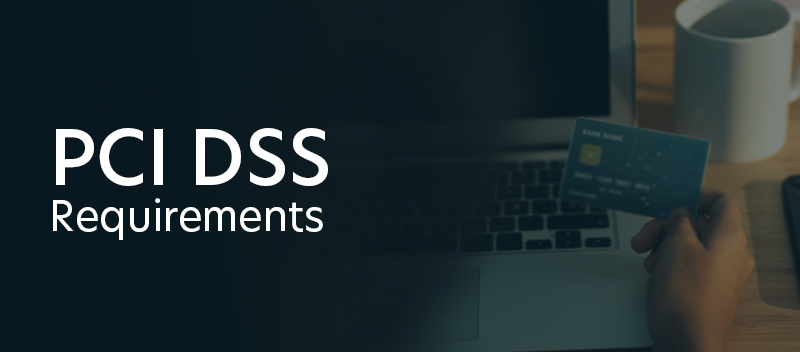
The Payment Card Industry Data Security Standard (PCI DSS) is designed to protect cardholder data and maintain trust in payment systems worldwide. Reducing security threats, avoiding fines, and attaining compliance all depend on following its guidelines. Within this framework, three core aspects play a pivotal role in safeguarding sensitive information: Password Management: Ensuring strong, secure passwords minimizes the risk of unauthorized access. Auditing: Regular audits help identify compliance gaps and weaknesses within an organization’s security infrastructure. Vulnerability Scanning: Proactive scanning detects potential threats, allowing organizations to address vulnerabilities before they are exploited. This article explores the significance of these requirements, providing actionable insights to help your organization protect sensitive data, ensure compliance with PCI DSS, and mitigate cybersecurity risks effectively. Password Management Effective password management is a central pillar of PCI DSS compliance. A. Definition and Importance Password management involves creating, maintaining, and protecting passwords used to access systems containing sensitive information. Robust password regulations aid in preventing credential theft, brute force attacks, and other security risks. Organizations may improve their overall security and show that they are in compliance with PCI DSS rules by giving password security top priority. B. Key Requirements To align with PCI DSS, businesses must adopt the following password management requirements: – Password Complicity All passwords must be at least 12 characters long and have numbers and special symbols. Longer and complex passwords make it significantly harder for attackers to use automated tools to guess credentials. Encourage passphrases that balance memorability with security. – Regular Updates Passwords should be changed every 90 days to minimize exposure to potential breaches. This strikes the right balance between usability and robust protection. – Encryption of Passwords All stored passwords must be encrypted, ensuring that even if data is compromised, attackers cannot easily access plaintext credentials. C. Best Practices To go beyond compliance and build a resilient system, organizations should implement these best practices: – Unique User IDs Assign a unique identifier to each user. This prevents shared credentials, making it easier to track and audit access. – Multi-Factor Authentication (MFA) MFA is mandatory for accessing systems that store, transmit or process cardholder data. By requiring multiple layers of authentication, such as a password and a code sent to a device, organizations significantly reduce the risk of unauthorized access. By following these guidelines and practices, businesses can strengthen their defenses, comply with PCI DSS, and maintain a secure environment for their data and customers. For more on our PCI DSS 4.0.1 services, Click Here Auditing Practices Maintaining PCI DSS compliance depends heavily on auditing, which assists businesses in identifying weaknesses, confirming their security protocols, and meeting legal obligations. A. Importance of Audits in PCI DSS Compliance Audits are essential for assessing whether an organization’s security practices align with PCI DSS standards. By conducting regular audits, businesses can: Detect gaps in their security controls before they are exploited. Validate compliance to avoid penalties and safeguard their reputation. Build customer trust by demonstrating a proactive approach to protecting sensitive data. Audits not only support compliance efforts but also play a key role in enhancing overall security across all operations. B. Types of Audits Organizations can choose the appropriate audit method based on the size and complexity of their operations: – On-site Audits by Qualified Security Assessors (QSAs) These comprehensive audits involve certified professionals who evaluate an organization’s security posture in detail. QSAs provide tailored insights and recommendations for achieving compliance and provide certification. – Self-Assessment Questionnaires (SAQs) For smaller businesses or those handling limited cardholder data, SAQs offer a cost-effective way to assess compliance. These questionnaires guide organizations in reviewing their own security controls and identifying areas for improvement. C. Continuous Monitoring and Reporting Compliance isn’t a one-time achievement; it requires ongoing effort. Continuous monitoring and reporting ensure that an organization adapts to emerging threats and maintains high standards. Key steps include: – Real-time Monitoring Use automated tools to track network activity, detect anomalies, and address potential issues immediately. – Regular Reporting Document audit findings and security updates to maintain transparency and streamline future assessments. Organizations may improve security, reduce risks, and bolster compliance by incorporating these auditing methods. Vulnerability Scanning Vulnerability scanning aims to proactively identify weaknesses and remove any possible threats. By continuously analyzing their systems, organizations may strengthen their defenses and ensure ongoing compliance with security regulations. A. Role in PCI DSS Compliance Vulnerability scanning helps organizations detect and address security flaws before they are exploited. Its importance in PCI DSS compliance includes: Ensuring systems and networks are free from vulnerabilities that could lead to data breaches. Demonstrating to stakeholders and regulators that proactive security measures are in place. Providing insights necessary to fine-tune security policies and maintain compliance. This proactive approach meets regulatory standards and bolsters trust in your organization’s commitment to safeguarding cardholder data (CHD). B. Types of Scans Required Different scans are mandated under PCI DSS to cover all potential exposure points. These include: Internal Scans: conducted within the organization’s network, internal scans identify issues like misconfigurations or outdated software that could compromise system integrity. External Scans: performed by an Approved Scanning Vendor (ASV), external scans evaluate vulnerabilities from outside the network, ensuring the security of internet-facing assets. Penetration Testing: this in-depth form of testing simulates real-world attacks to assess whether vulnerabilities can be exploited. It provides essential insights into how well security measures withstand threats. B. Remediation Strategies Uncovering vulnerabilities is only the first step, rapid and effective remediation is equally important. Key strategies include: Prioritize Identified Risks: address critical vulnerabilities first to minimize the chance of exploitation. Use risk-based approaches to allocate resources effectively. Patch Management Regularly: update software and firmware to fix known vulnerabilities. Stay ahead by implementing a robust patching schedule. Reassess and Validate: after remediating issues, conduct follow-up scans to confirm vulnerabilities have been resolved and no new ones have emerged. Research: Regularly review industry leaders to define new vulnerabilities that may be applicable to the infrastructure type that an organization uses. By using vulnerability scanning and implementing these procedures,
HIPAA Data Storage and Transaction Requirements: A Complete Overview

Healthcare providers, administrators, and IT professionals know how critical HIPAA compliance is, yet navigating its complexities can be complex. HIPAA, or the Health Insurance Portability and Accountability Act, establishes strict regulations to protect sensitive health information. Non-compliance can result in substantial fines, legal consequences, and damage to your organization’s reputation. HIPAA compliance includes clear storage and transmission requirements for both protected health information (PHI) and electronic protected health information (ePHI). PHI, which exists in physical formats like paper records, requires robust physical security, such as controlled access to facilities, locked storage, and secure disposal methods. On the other hand, ePHI, which is stored or transmitted electronically, demands both technical and physical safeguards. Key technical measures include encryption, access controls, and secure transmission protocols, while physical security remains essential for devices and servers storing ePHI. Key areas include: Data storage safeguards: Encryption, access controls, physical security, and reliable backup systems enhance data integrity and protection. Secure transactions: Encrypted transmissions reduce risks during data exchange, safeguarding sensitive information from unauthorized access. Business Associate Agreements (BAAs): These agreements ensure that third-party organizations managing PHI or ePHI on behalf of an entity comply with HIPAA regulations. BAAs clearly define responsibilities for protecting health information and maintaining security standards. Administrative safeguards: Comprehensive administrative measures, including breach notification procedures and the establishment of BAAs, are essential for maintaining compliance. Breach notification procedures outline actions to take in case of a data security incident, helping organizations respond promptly and effectively. Understanding these requirements is essential for ensuring compliance with HIPAA’s data storage and transaction standards. This article provides a focused guide to help your organization meet these specific requirements effectively. Core HIPAA Data Storage Requirements Storing PHI and ePHI securely is a foundational aspect of HIPAA compliance. Proper safeguards ensure data remains confidential and reliable, whether at rest or in transit. Below, we break down the key components that define HIPAA-compliant data storage. — Data Encryption Encryption is vital for protecting sensitive information. Data at rest: Stored data, also known as data at rest, must be encrypted to protect it from unauthorized access. This safeguard is critical for maintaining the confidentiality and security of data within storage systems, whether on servers, devices, or other storage media. — Access Controls Controlling who can access ePHI is another critical requirement. User authentication: Implementing strong passwords and multi-factor authentication adds a layer of security. Authorization: Role-based access control (RBAC) and the least privileged principle ensure that users only access the data they need. — Data Integrity Keeping data accurate and complete is essential. Backups and disaster recovery: Regular backups ensure data can be restored in case of hardware failure, cyberattacks, or natural disasters. Validation checks: Routine integrity checks confirm that stored data remains unaltered and trustworthy. — Physical Security HIPAA extends beyond digital protections to include physical safeguards. Secured facilities: Restricting physical access, implementing surveillance, and requiring badges or biometric scans are essential measures to safeguard both PHI and ePHI. These measures protect servers and infrastructure housing ePHI, as well as physical documents containing PHI. Device protection: Safeguarding laptops, mobile devices, and other equipment from theft or unauthorized access is equally important. By implementing these measures, organizations can establish a robust framework for HIPAA-compliant data storage, reducing risks and ensuring peace of mind for both administrators and patients. For more info on our HIPAA Compliance services, Click Here HIPAA Data Transaction Requirements Managing the secure transmission, handling, and notification of breaches involving PHI/ePHI is critical for HIPAA compliance. Below, we outline the key requirements to ensure organizations handle sensitive data responsibly and within regulatory standards. Data in transit: When ePHI is transmitted electronically — via email, file transfers, or other means — it must also be encrypted to prevent interception. 1. Secure Transmission Methods The HIPAA Security Rule mandates safeguards to protect ePHI during electronic transmission, ensuring it remains confidential and intact. Effective methods include: HTTPS (Secure Sockets Layer): HTTPS encrypts communication between web browsers and servers, protecting ePHI from unauthorized access during transmission. VPN (Virtual Private Network): VPNs create secure, encrypted connections over public or private networks, shielding transmitted data from interception. Health Information Exchanges (HIEs): HIEs enable secure data sharing between healthcare entities. Encryption and robust authentication protocols ensure compliance and data integrity. These transmission methods guard against unauthorized access, ensuring ePHI is secure from origin to destination. 2. Audit Trails Audit trails also play an essential role in data transactions. Organizations must document when, how, and to whom ePHI was transmitted. Additionally, continuous monitoring is required to identify unauthorized access or any attempts to intercept transmitted data, ensuring compliance and safeguarding sensitive health information. 3. Administrative Safeguards – Business Associate Agreements (BAAs) A Business Associate Agreement (BAA) is essential when a third party performs functions involving PHI/ePHI. These agreements clarify responsibilities and ensure HIPAA compliance. Why BAAs Are Important: Without a signed BAA, covered entities risk significant fines and legal issues. BAAs obligate business associates to follow HIPAA regulations when handling PHI/ePHI. Key Elements of a BAA: Agreements must define PHI/ePHI, detail their permitted uses and disclosures, require encryption and other safeguards, specify protocols for reporting breaches, affirm HIPAA compliance, include termination and indemnification clauses, and specify actions for the return or destruction of PHI/ePHI when the agreement ends. Ensuring Compliance: Business associates must implement security measures, conduct routine audits, and adhere to processes outlined in the BAA. Failure to comply can result in severe penalties for both parties. – Breach Notification Procedures HIPAA’s Breach Notification Rule requires swift action in the event of a breach involving unsecured PHI/ePHI. Unsecured protected health information refers to information that has not been rendered unusable, unreadable, or indecipherable to unauthorized individuals through technologies or methodologies specified by the Secretary of Health and Human Services. A breach is defined as any impermissible use or disclosure of PHI/ePHI that compromises its security or privacy, unless a risk assessment demonstrates a low probability of compromise. – Notification Procedures: Individual Notice: Notifications must include details such as a description of the breach, the

